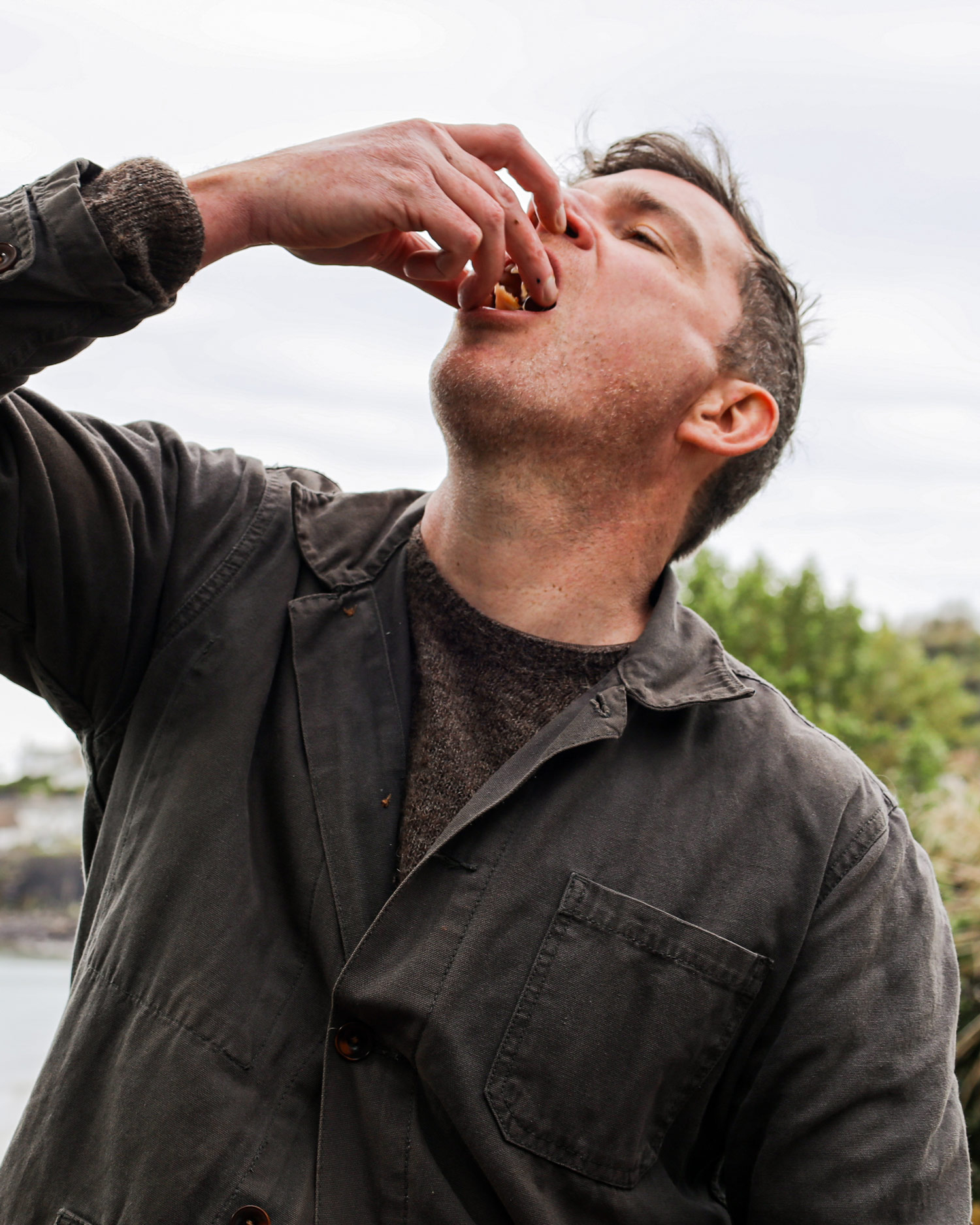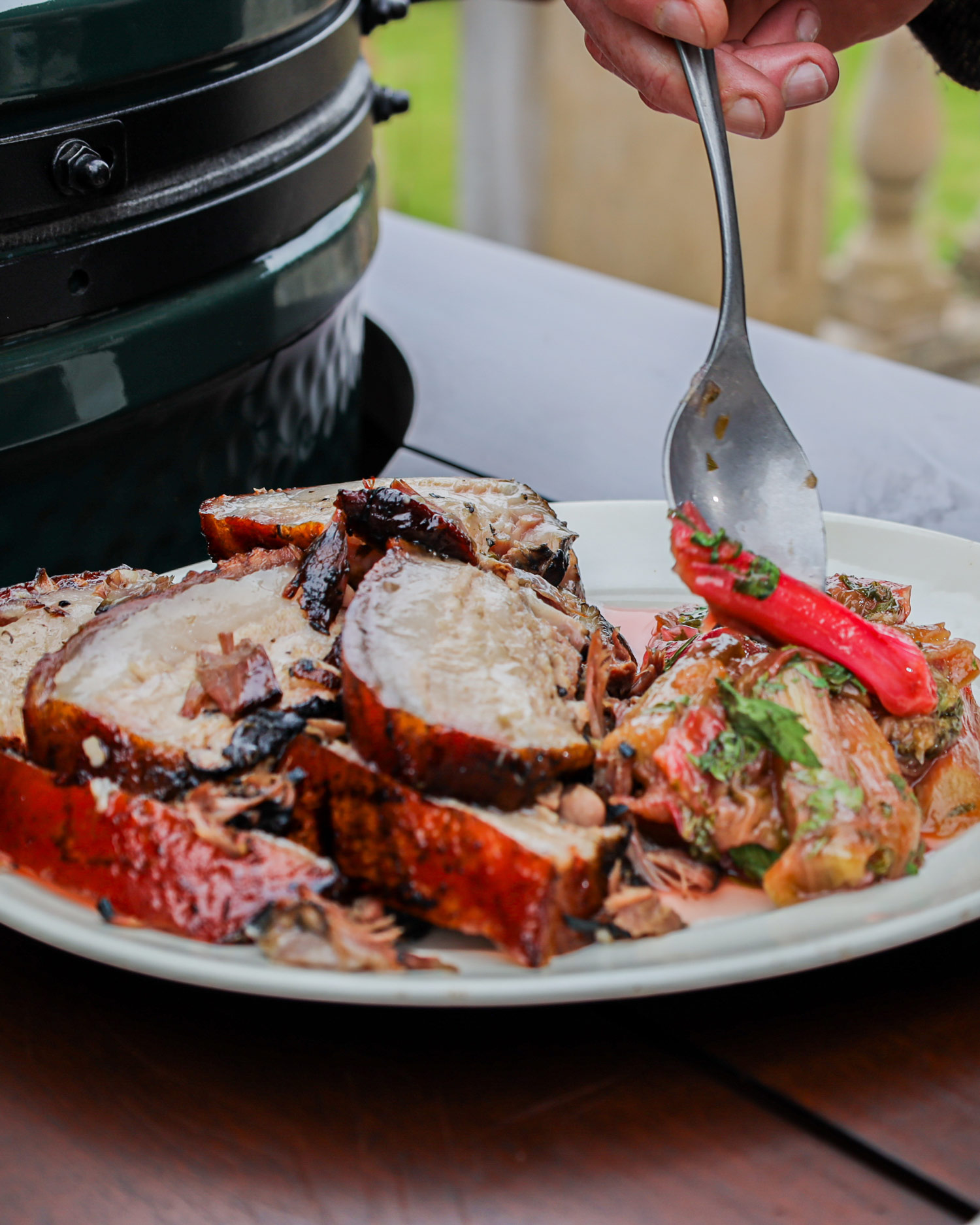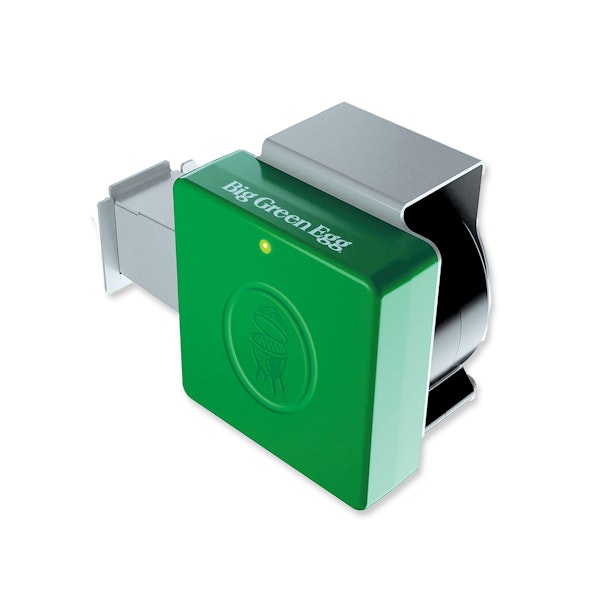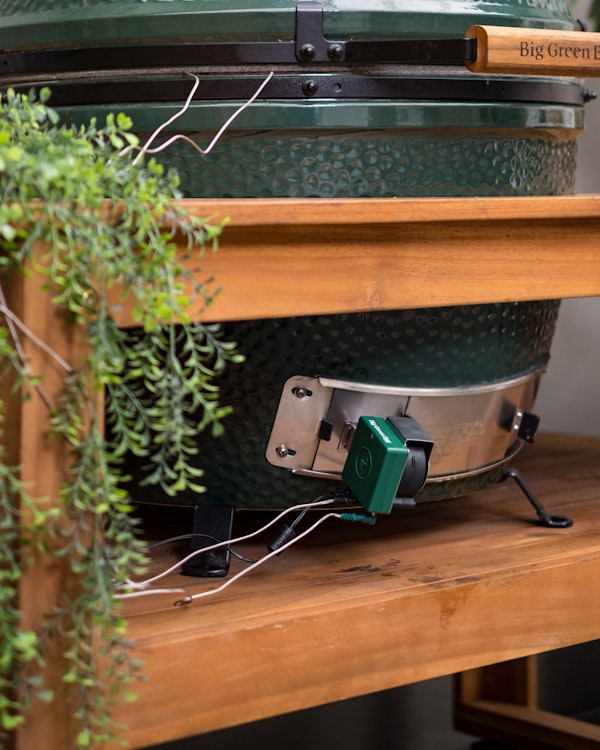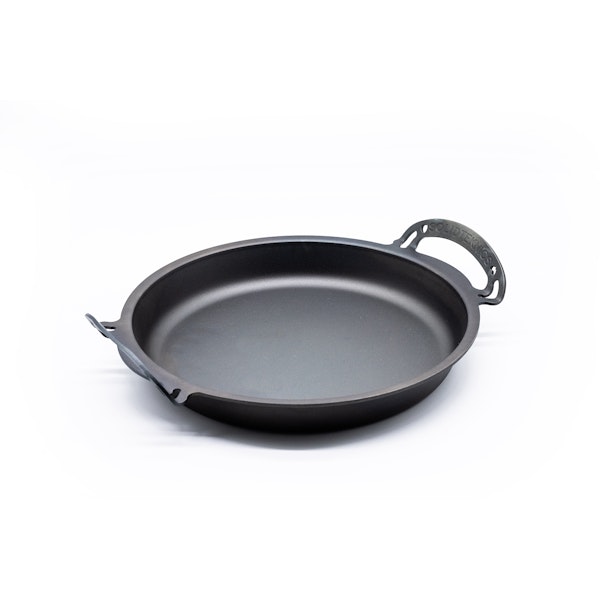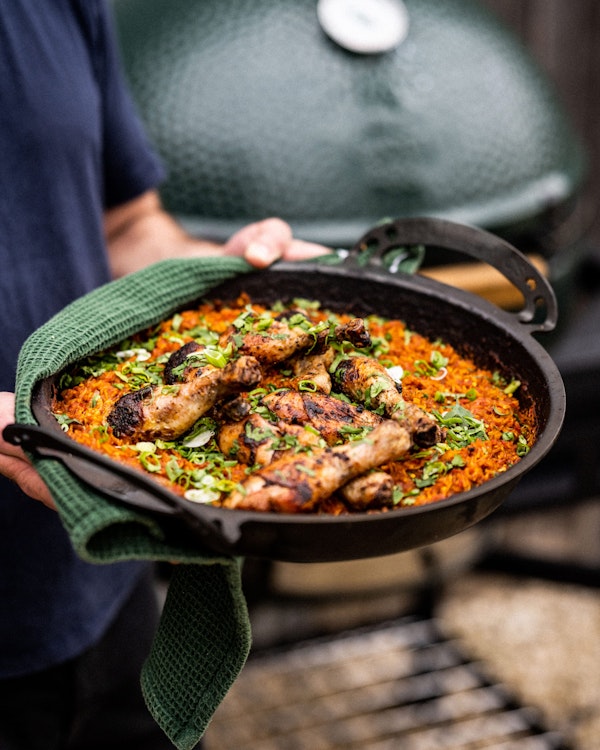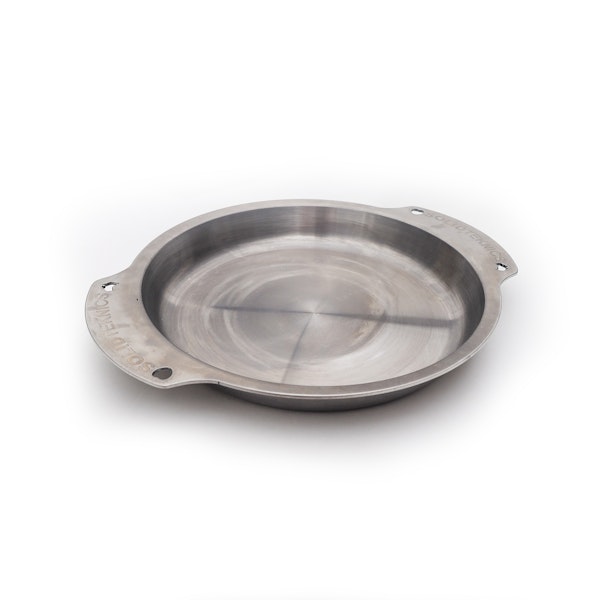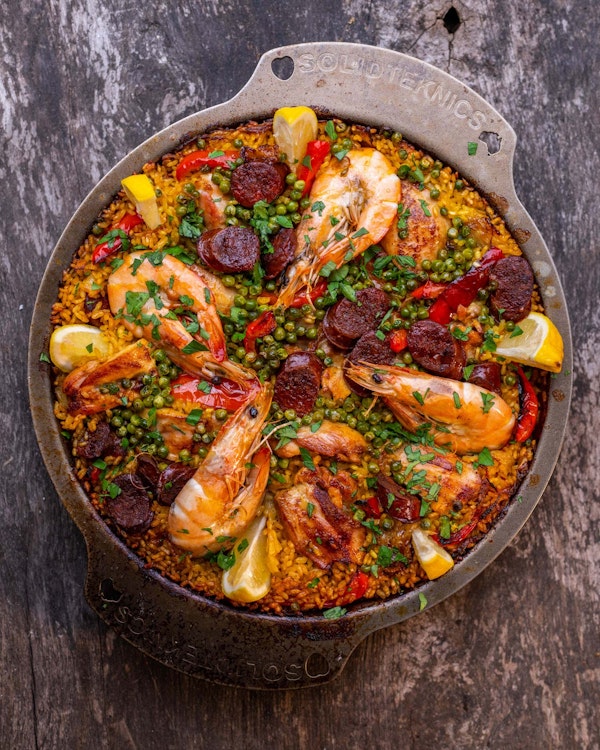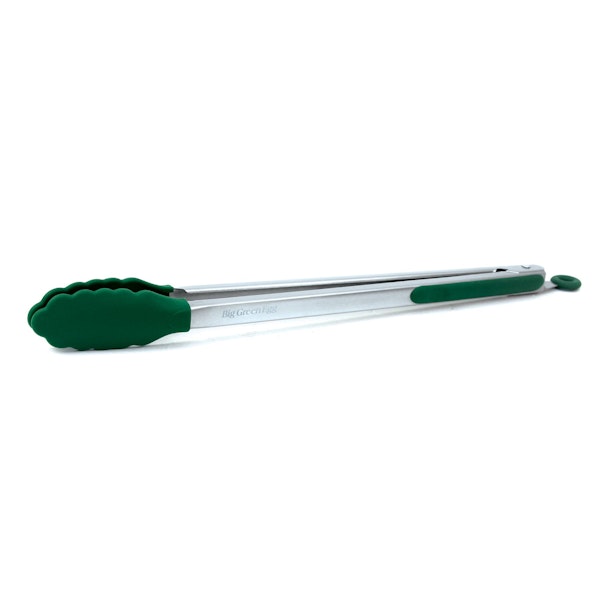OVERVIEW
The secret to good slow-cooked pig’s cheeks is to dry cure them overnight in a combination of salt, sugar and herbs, then grill them until they’re caramelising. Then they go into a pan for a long, slow smoke. I like to serve them with a nice sharp rhubarb sauce flavoured with a herb called lovage, which has the most wonderful harmony with the acidic fruitiness of the rhubarb. That sauce with the tender pig’s cheeks is a match made in heaven.
CURE THE PIG’S CHEEKS
Combine all the ingredients for the dry cure in a mixing bowl. Add the pig’s cheeks and turn until coated all over. Cover, place in the fridge and leave to cure for 24-48 hours, turning them once or twice during this time.
When you’re ready to cook, take the pig’s cheeks out of the cure, rinse under cold running water, place on a clean tea towel and pat dry. Discard the cure.
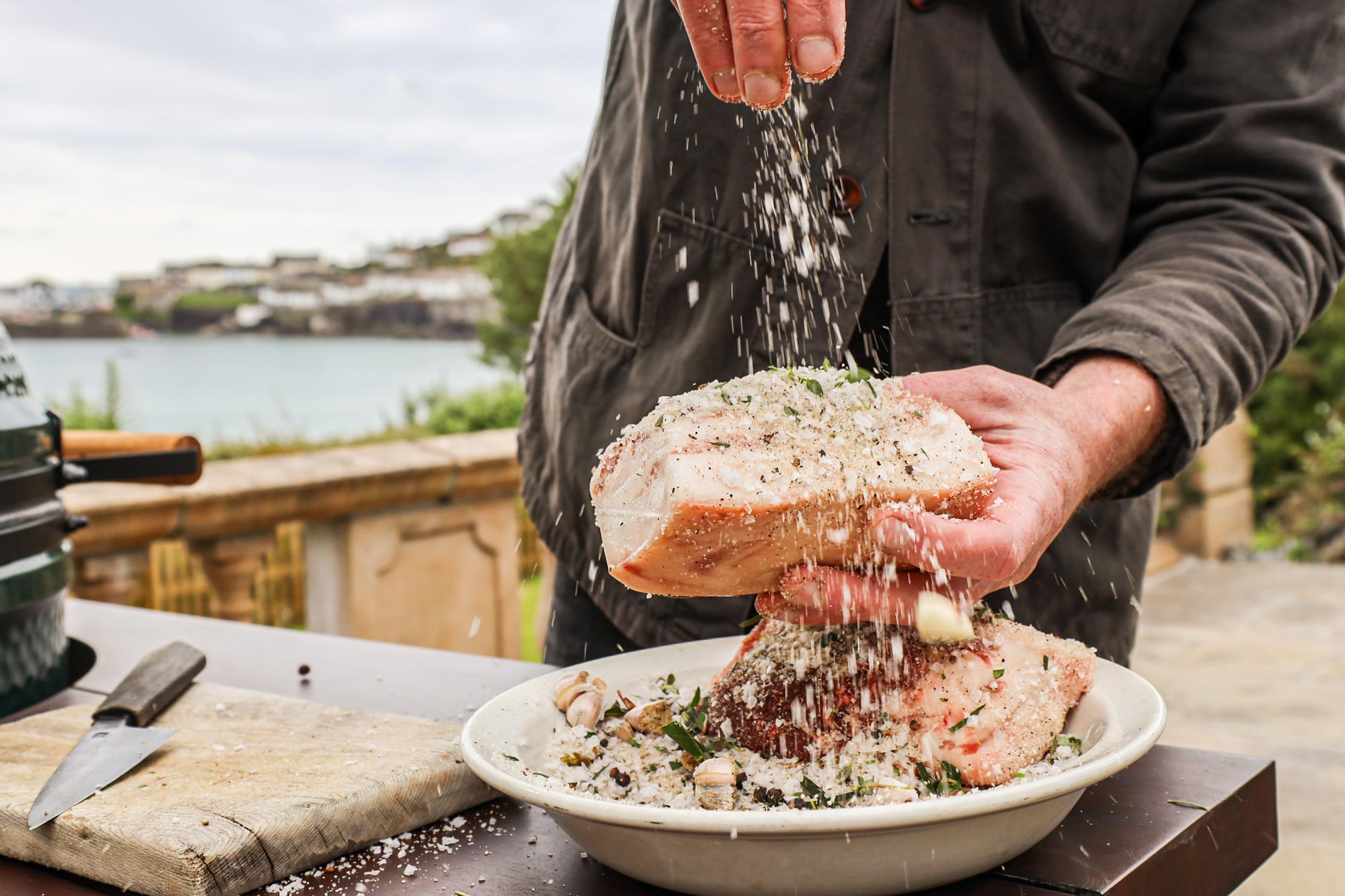
SET UP YOUR EGG
Set up your EGG for direct cooking with a Stainless Steel Grid in place. Your target temperature is 180°C-200°C.
Set the pig’s cheeks onto the grid and grill for 6-8 minutes, turning occasionally until nice and golden on all sides. Lift off the grid and place in a heavy pan, along with the onions, garlic, thyme, bay and a good splash of cider.
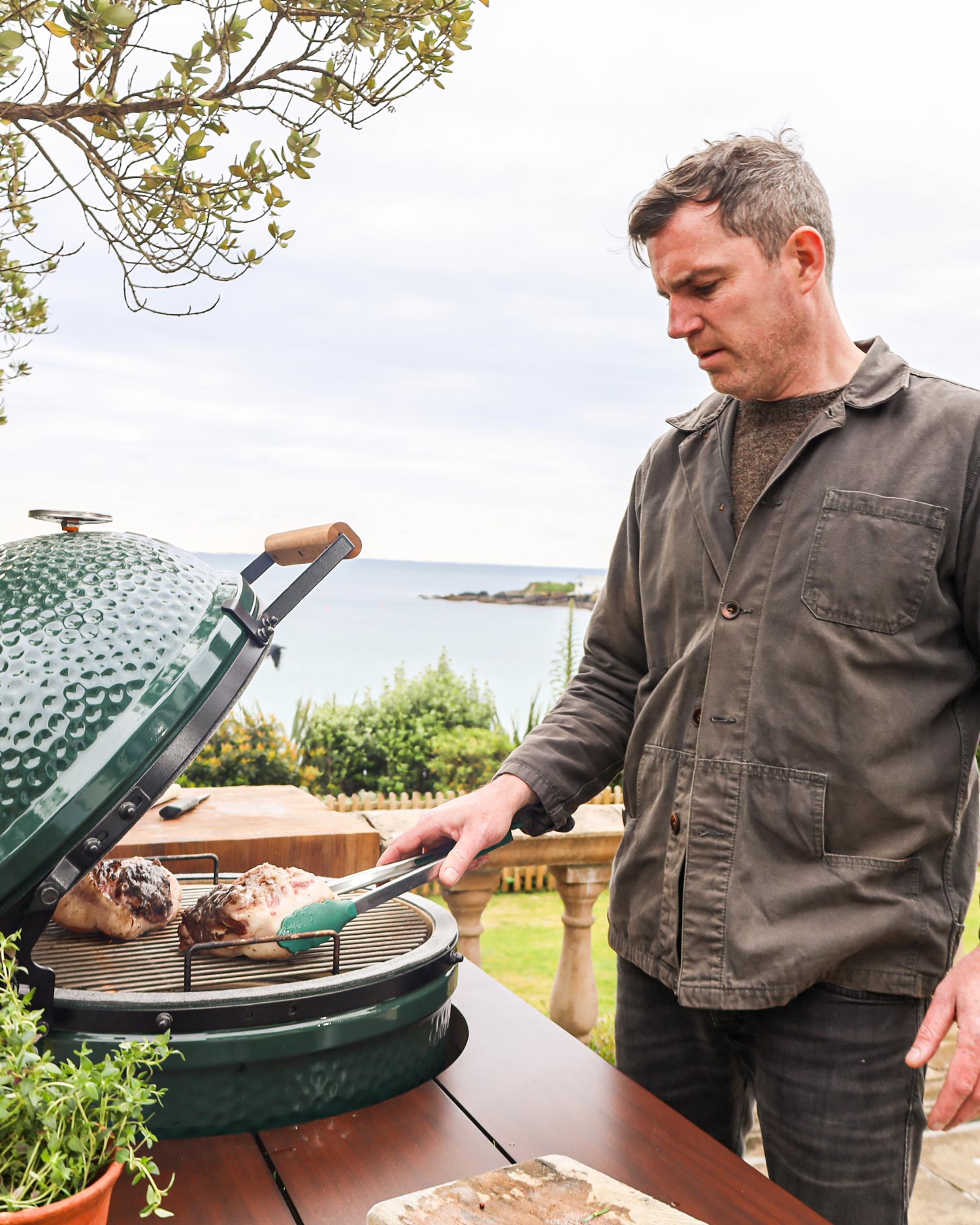
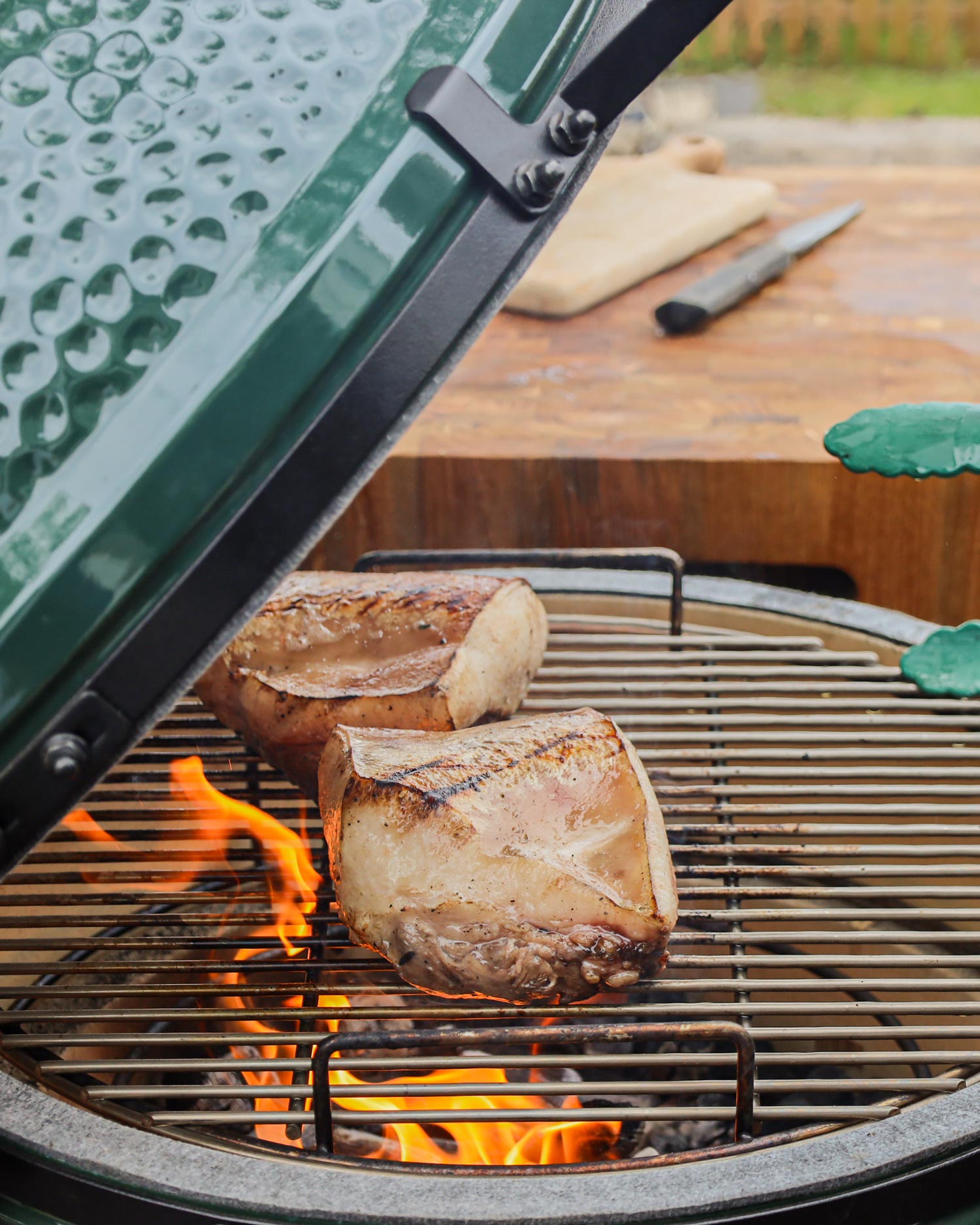
At this point add a couple of handfuls of Premium Woodchips to the charcoal and install the ConvEGGtor with the Stainless Steel Grid above it, to switch to indirect cooking. Bring the temperature down to 110°C.
SLOW COOK THE PIG’S CHEEKS
Set the pan of pig’s cheeks down on the grid and cook for 4-5 hours until tender enough to break apart easily with a spoon. You may need to add a splash more cider or water as they’re cooking to help keep everything nice and moist.
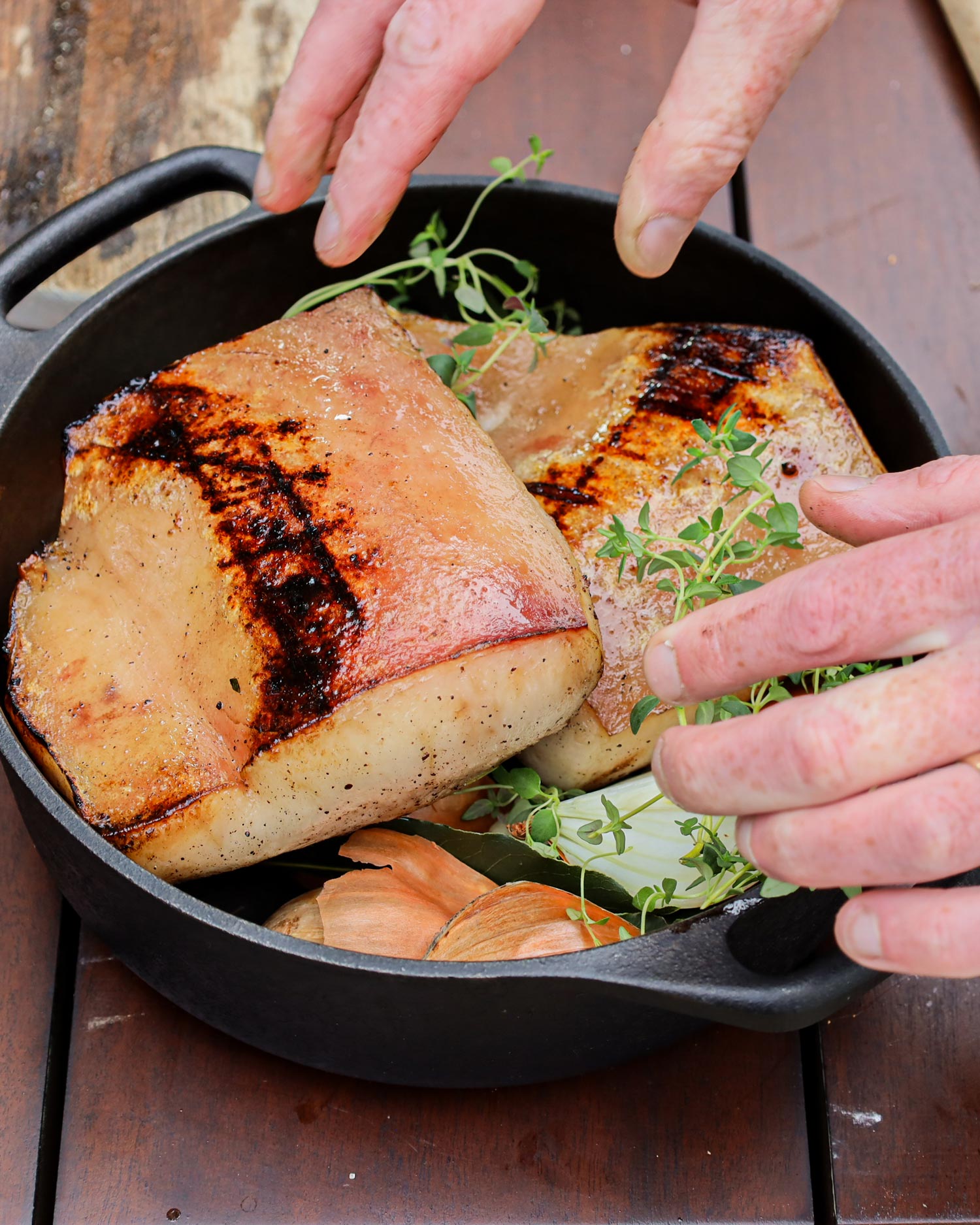
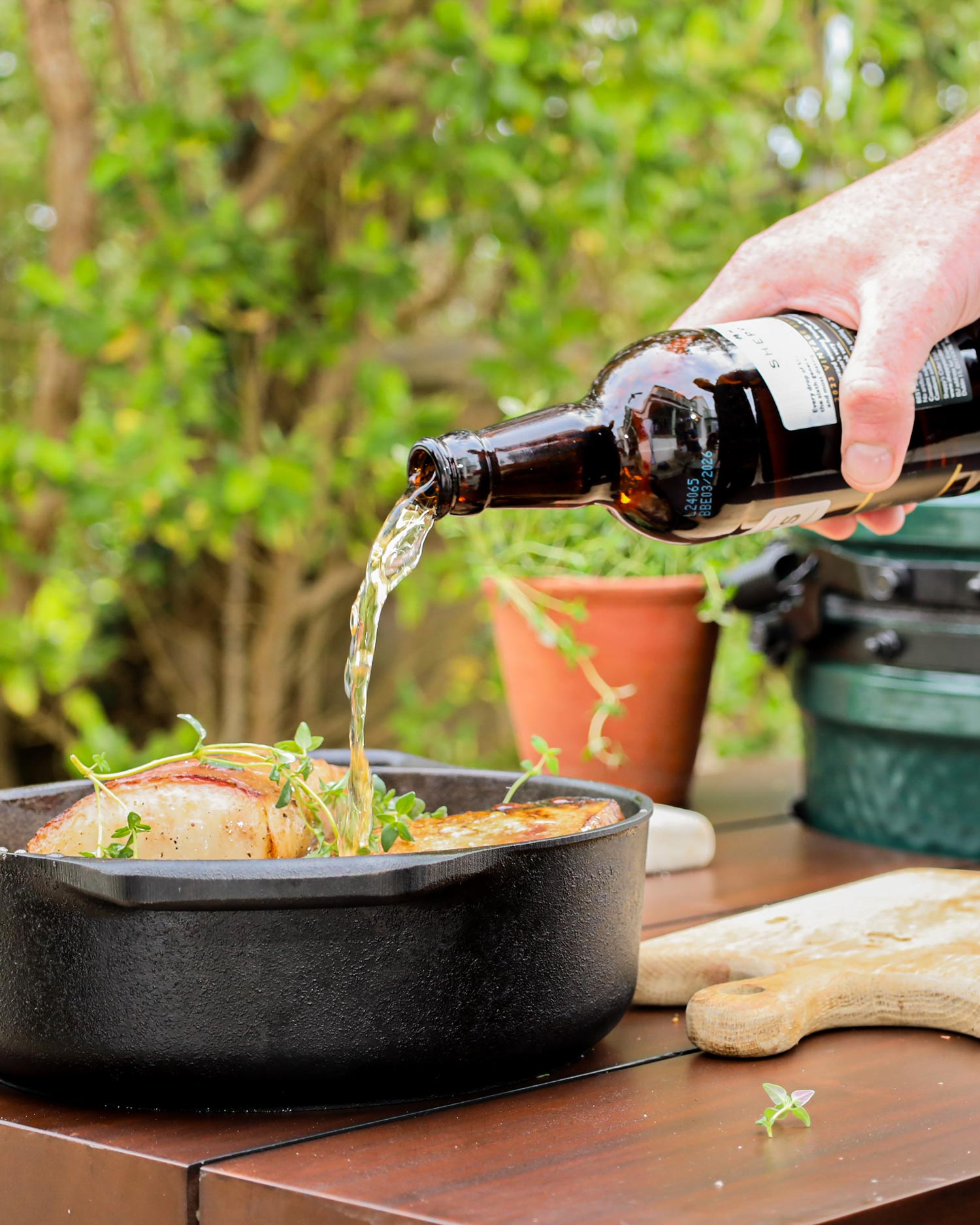
When the pig’s cheeks are ready, take them out of the EGG, lift them out of the pan and place them on a board to rest. The onions and garlic have done their job at this stage, but if they’re still in good shape, and not too dark, you can spoon them out alongside the cheeks. Keep the cheeks warm while you cook the rhubarb.
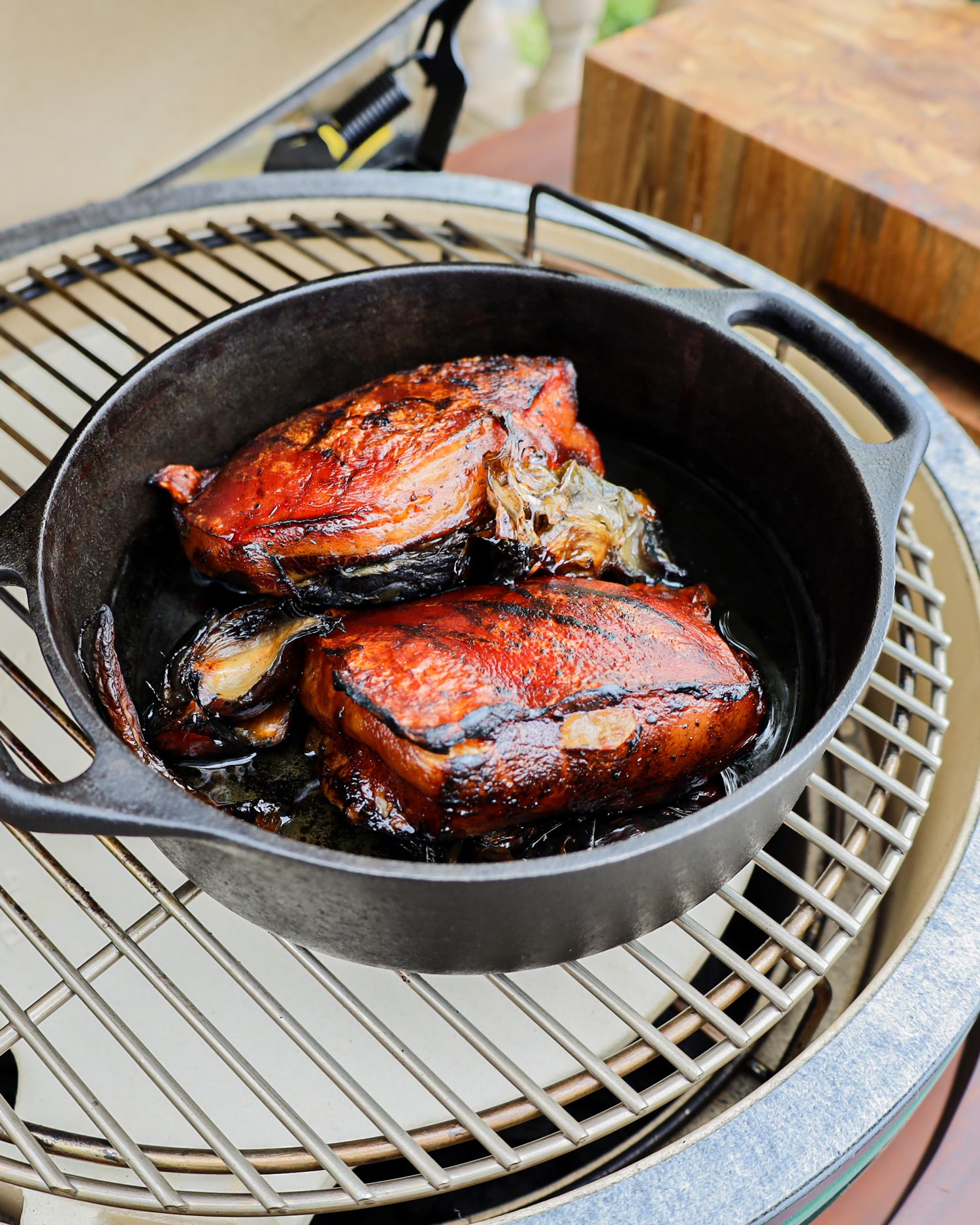
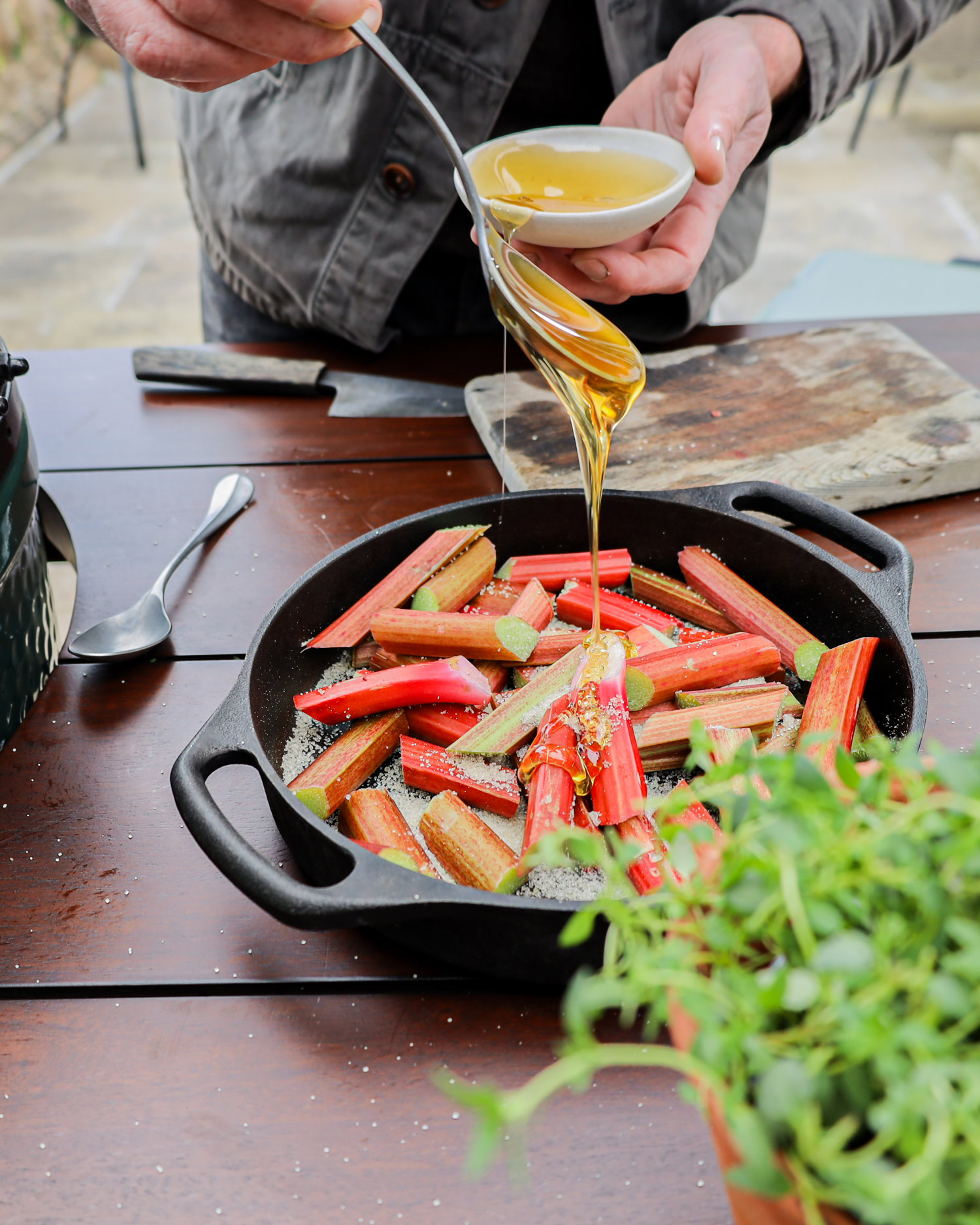
COOK THE RHUBARB SAUCE
Remove the ConvEGGtor and bring the temperature up to 150°C, with the grid still in place. Cut the rhubarb into 3-4cm pieces and pop them in the pan with the vinegar, honey, sugar, a dash more cider, and a little salt and pepper. Tumble everything around. Place the pan into the EGG, close the Dome, and cook for 10-15 minutes until the rhubarb is tender but just holding its shape.
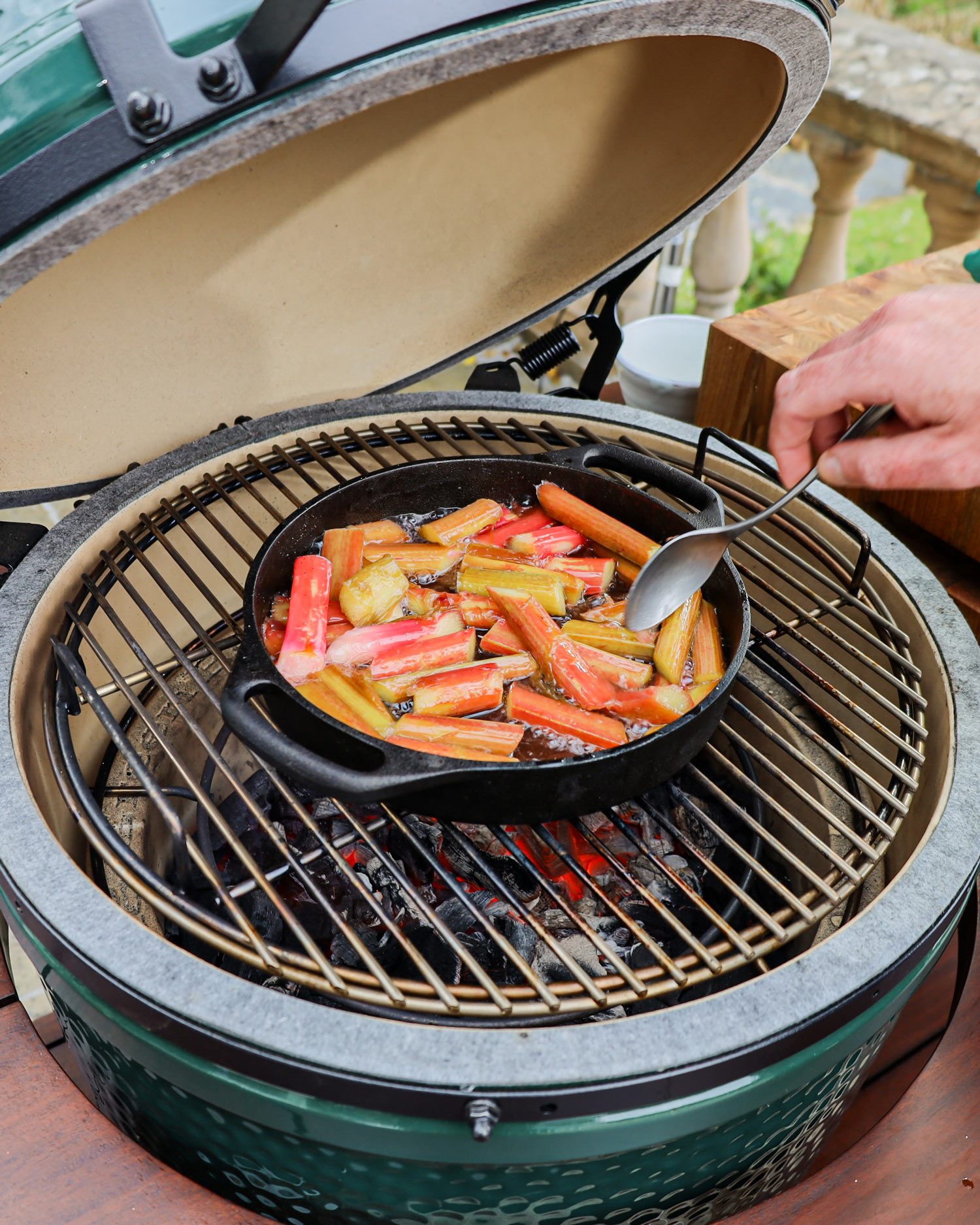
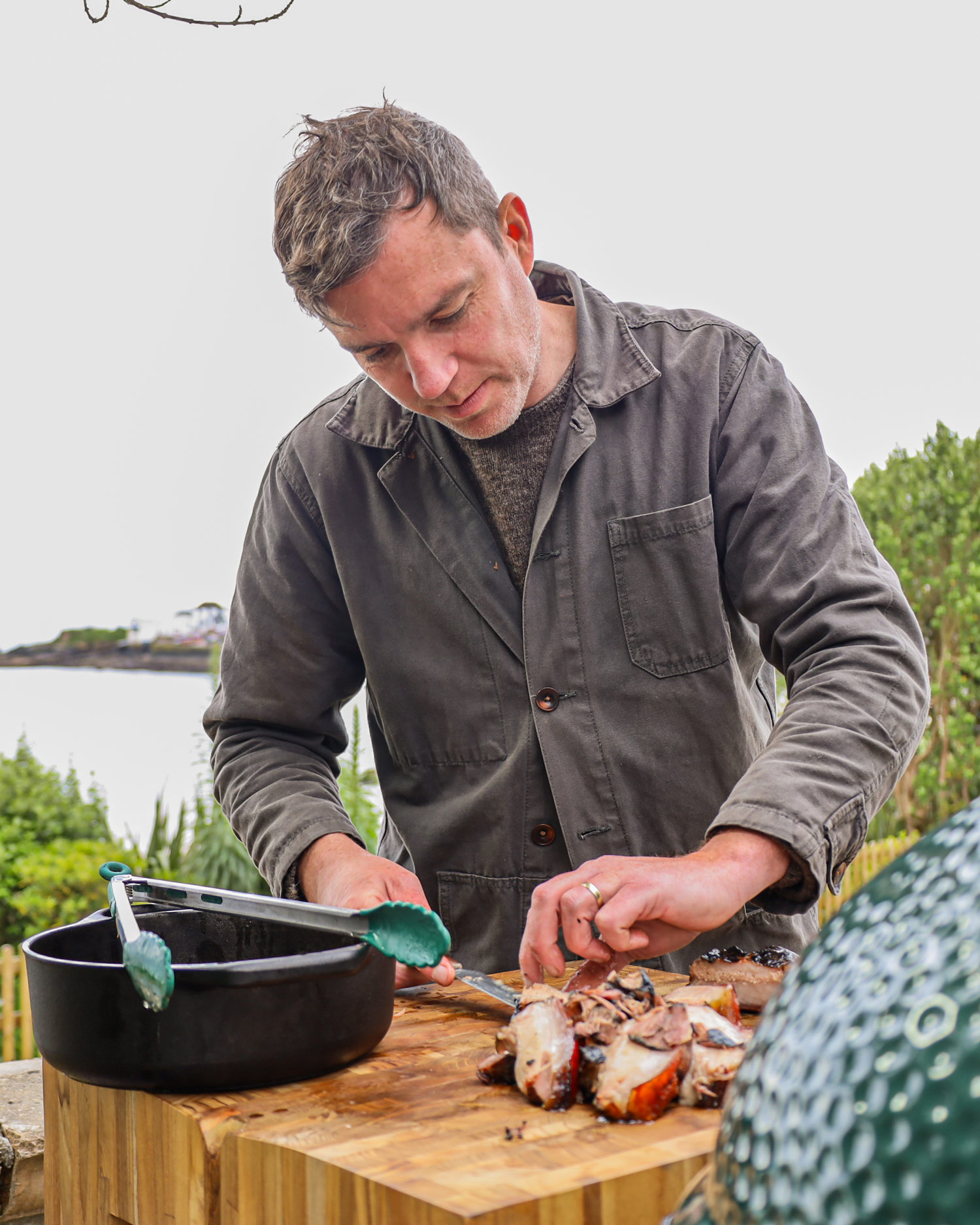
Stir the chopped lovage leaves into the rhubarb sauce. Taste and adjust the sweetness if you need to. It should be fairly sharp though, as it needs to cut through the richness of the pig’s cheeks.
Remove the skin and excess fat from the pig’s cheeks and discard (or, if you’re game, you can eat it too). Slice the cheeks and serve with the rhubarb sauce on the side.
